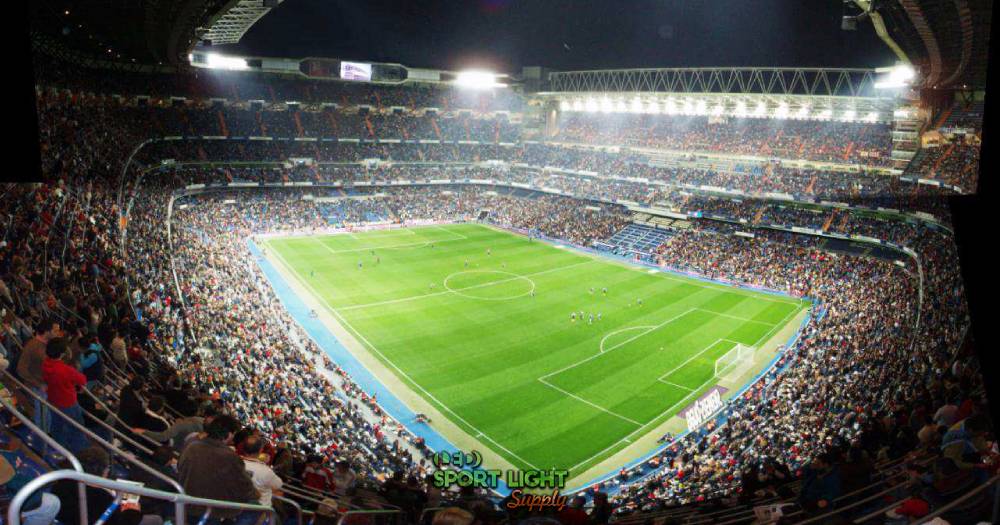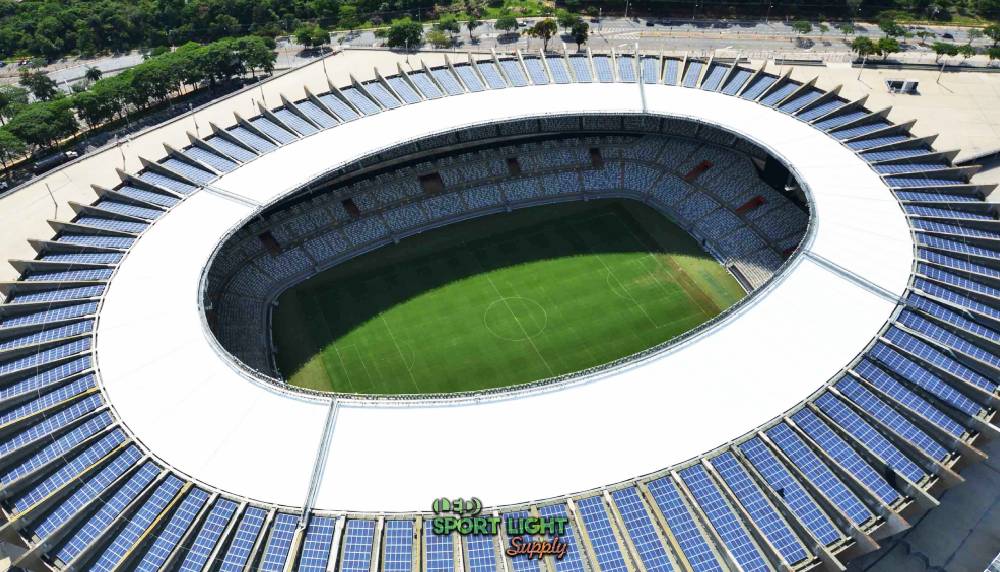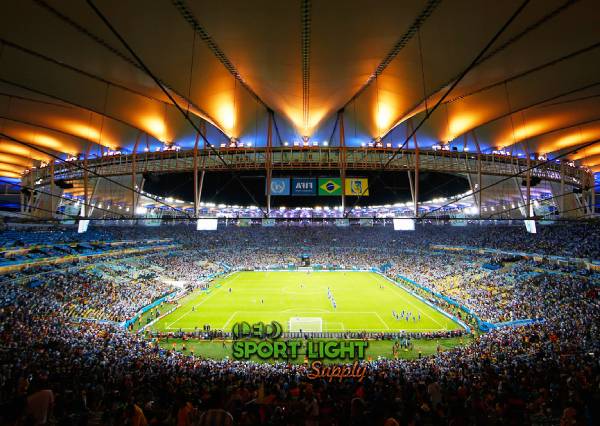Soccer is a sport that thrives on nighttime events, especially as evenings provide a cooler and more comfortable environment for players and fans alike. For many years, artificial lighting has made these events possible, illuminating fields during low-light conditions. Traditional lighting solutions, such as metal halide lamps and halogen floodlights, have long been the standard for soccer field illumination. However, the rising awareness of environmental sustainability and the demand for cost-effective, efficient solutions have led to the emergence of solar lighting as an alternative. This change is transforming how soccer fields are lit, offering various benefits that are challenging the status quo of traditional lighting systems.
| Lighting System | Power Consumption | Installation Cost | Annual Energy Cost | Lifespan | CO2 Emissions (Annual) | Maintenance Requirements |
|---|---|---|---|---|---|---|
| Traditional (Metal Halide) | 1,000–2,000 watts per light | $30,000 – $60,000 | $2,000 – $5,000 | 10-15 years | 4.6 tons CO2 per 1,000 watts | High – frequent bulb replacements, repairs |
| Solar Lighting (LED) | 100–200 watts per light | $20,000 – $40,000 | $0 | 20+ years | 0 tons CO2 | Low – occasional panel cleaning, minimal repairs |
Table of Contents
ToggleUnderstanding Traditional Lighting in Soccer Fields

Traditional soccer field lighting systems, especially those using metal halide lamps, have been the go-to option for decades. These systems rely on electricity from the grid, which is powered by fossil fuels in many areas, contributing to carbon emissions. The lamps themselves are typically bulky, expensive to install, and require ongoing maintenance. Additionally, the energy consumption of these systems can be quite high, leading to increased utility bills for soccer facilities.
The operation of traditional lighting systems involves a high upfront cost for installation and continued maintenance over time. A typical metal halide lighting setup may cost anywhere between $30,000 to $60,000 to install, with operational costs adding another $2,000 to $5,000 per year in electricity alone. Additionally, these lighting systems often suffer from inefficient energy use, producing significant amounts of heat and requiring large amounts of electricity to generate the required illumination levels for night games.
The Rise of Solar Lighting in Soccer Field

Solar lighting systems have steadily emerged as a promising alternative to traditional lighting solutions, particularly in outdoor environments such as soccer fields. These systems operate by utilizing solar panels to capture energy from the sun. During the day, the solar panels collect and store energy in batteries, which is then used to power energy-efficient LED lights at night. The use of solar panels makes solar lighting inherently eco-friendly, relying on a renewable energy source, which is one of the reasons it is becoming a more attractive option for sports facilities.
Traditional lighting systems, particularly those that rely on fossil fuels or the power grid, can contribute significantly to environmental degradation. In contrast, solar lighting systems reduce dependence on non-renewable energy sources, offering a more sustainable way to illuminate soccer fields. As more sports venues strive to minimize their carbon footprints, solar lighting has gained widespread interest due to its capacity to generate power without producing harmful emissions. This reliance on solar energy instead of electricity from the grid contributes to long-term sustainability goals, which is increasingly important to communities, fans, and organizations that prioritize environmental stewardship.
Technological Advancements Driving Solar Lighting Adoption
 The rapid growth in the adoption of solar-powered lighting systems can be attributed to the continuous advancements in both solar panel and LED technology. Over the last decade, the efficiency of solar panels has improved dramatically. Modern solar panels are more efficient at converting sunlight into electricity, meaning they can generate more power in less time, even under varying weather conditions. This improvement in technology makes solar lighting a more reliable option for lighting soccer fields, which require consistent and powerful illumination.
The rapid growth in the adoption of solar-powered lighting systems can be attributed to the continuous advancements in both solar panel and LED technology. Over the last decade, the efficiency of solar panels has improved dramatically. Modern solar panels are more efficient at converting sunlight into electricity, meaning they can generate more power in less time, even under varying weather conditions. This improvement in technology makes solar lighting a more reliable option for lighting soccer fields, which require consistent and powerful illumination.
LED technology has also seen remarkable advancements, becoming more energy-efficient and durable. LEDs require far less power than traditional incandescent or halogen lamps while still providing bright, high-quality light that ensures optimal visibility during nighttime events. The energy efficiency of LEDs, combined with the enhanced performance of solar panels, creates a highly effective solution for lighting sports fields. The combination of these technologies allows for a sustainable, low-energy alternative to the conventional lighting systems that have historically been used in soccer fields, making solar lighting a more attractive option for both facility owners and environmental advocates.
The Transition from Grid-Based Power to Solar
Historically, soccer fields relied heavily on electricity from the grid to power their lighting systems. Traditional floodlighting systems, such as those using metal halide or sodium vapor lamps, are connected to the power grid, often drawing large amounts of electricity to illuminate the field. This process results in high energy consumption and the associated costs. For many sports facilities, electricity bills can account for a significant portion of operational expenses, especially if the fields are used frequently for matches, practices, and events.
Solar lighting systems, in contrast, are independent of the grid and do not require a constant flow of electricity from external sources. This feature is particularly beneficial for soccer fields located in rural or remote areas where electricity access may be limited or non-existent. By relying on solar panels to collect energy during the day and store it in batteries for use at night, solar lighting systems ensure that soccer fields can remain lit without the need for an expensive connection to the power grid. This autonomy also provides a level of security for venues that might face disruptions in power supply, allowing them to continue operating even in times of electrical outages.
The Efficiency of Solar Lighting Compared to Traditional Options
The efficiency of solar lighting systems is one of the main factors contributing to their growing popularity. Traditional lighting systems, especially in large outdoor areas like soccer fields, tend to be highly energy-intensive. These systems often rely on power-hungry lights, such as metal halide floodlights, which consume between 1,000 and 2,000 watts of electricity per unit. When multiple lights are required to adequately illuminate a soccer field, the energy consumption becomes significant, leading to higher electricity bills and a greater environmental impact.
In comparison, solar-powered LED lights offer a much more energy-efficient solution. These lights consume only a fraction of the energy required by traditional systems, using between 100 and 200 watts per unit. This reduction in energy consumption is made possible by advancements in both solar panel and LED technologies. Solar panels now capture sunlight more efficiently, while LED lights have become even more effective in converting energy into high-quality illumination. As a result, soccer fields using solar-powered lighting can achieve the same level of brightness and visibility as those using traditional lighting, but at a fraction of the energy cost.
The adoption of solar lighting in soccer fields is driven by these efficiency improvements, as they allow for the consistent illumination of large areas with minimal energy expenditure. Soccer field operators can light their facilities without the need to rely on expensive and environmentally damaging power sources. This shift toward solar lighting has the potential to significantly reduce overall energy consumption, providing long-term sustainability for sports facilities.
Independence from the Power Grid
One of the most appealing aspects of solar lighting systems is their ability to operate independently from the power grid. Unlike traditional lighting, which requires a stable connection to the grid, solar lighting systems rely on solar panels to harness energy directly from the sun. This feature is particularly valuable for soccer fields located in remote or rural areas where access to reliable electricity infrastructure can be limited or even non-existent.
In regions where power supply may be unstable or unavailable, solar-powered lighting offers a dependable alternative. Solar lights can store energy during the day in batteries, which are then used to power the lights at night. As a result, these systems do not require an ongoing electricity supply, meaning that soccer fields do not face the risks or expenses associated with grid power outages. Moreover, the use of solar energy means there is no need to rely on traditional utilities, which can be both costly and unreliable in some areas.
In addition to providing independence from the grid, solar-powered lights also eliminate electricity bills, which can be a significant burden for sports venues. Since solar systems charge their batteries using sunlight, the only ongoing costs are related to maintenance and occasional battery replacement. This is a major advantage over traditional lighting systems, which come with recurring electricity charges and often higher maintenance costs due to the need for frequent bulb replacements and repairs.
Cost Savings and Long-Term Financial Benefits
When evaluating the financial implications of solar lighting, the initial installation cost may seem high. On average, a solar lighting system for a soccer field can cost between $20,000 and $40,000, depending on the size of the field and the number of lights needed. In comparison, traditional lighting systems tend to have similar or higher upfront installation costs. However, the long-term financial benefits of solar lighting quickly offset the initial investment.
Once installed, solar lighting systems offer a variety of cost-saving benefits that continue to provide value over time. For one, there are no electricity bills to pay, which results in significant savings over the years. Traditional lighting systems, especially those that use high-wattage bulbs, can lead to substantial monthly electricity charges, particularly for sports fields that are frequently used for matches and training sessions. By switching to solar-powered lights, soccer fields eliminate these costs entirely, as the lights are powered by the sun’s energy, which is free and abundant.
Additionally, solar-powered LED lights have lower maintenance requirements than traditional lighting systems. Metal halide lamps, for instance, often need to be replaced every 10,000 to 15,000 hours, and their components can be prone to wear and tear. In contrast, solar-powered LEDs typically last for around 50,000 hours or more, reducing the frequency and cost of bulb replacements. These long-lasting LEDs require less maintenance overall, contributing to a lower total cost of ownership.
When considering all factors, solar lighting systems can reduce energy costs by up to 80% over the life of the system. The savings on energy, maintenance, and replacement costs make solar lighting an economically viable choice for soccer fields. For sports facilities that operate on tight budgets or those in regions where electricity prices are high, the financial advantages of solar lighting are clear. By making the switch to solar, these facilities can redirect funds that would otherwise go toward electricity bills and expensive lighting maintenance into other areas of operation or improvement.
Comparing Lifespan and Durability
Another important factor to consider when comparing solar lighting to traditional options is the lifespan and durability of the lighting equipment. The lifespan of a lighting system directly affects the long-term financial commitment required to maintain it. Traditional lighting systems, such as metal halide lamps, typically have a lifespan of around 15,000 hours. This relatively short lifespan means that bulb replacements and repairs are required more frequently, increasing the overall maintenance costs over time.
On the other hand, solar-powered LED lights are designed to last significantly longer, with many models capable of operating for over 50,000 hours. This extended lifespan means that soccer fields using solar lighting systems can avoid the costs associated with frequent bulb replacements. Additionally, LED lights are more durable than traditional bulbs, as they are less prone to breakage and are not affected by vibrations or temperature fluctuations in the same way. As a result, solar lighting systems are better equipped to withstand the elements, making them more reliable for year-round use, regardless of weather conditions.
The long lifespan of solar LEDs also contributes to the overall cost savings. With fewer replacements and lower maintenance needs, soccer fields can continue to benefit from the high performance of their solar lighting systems for many years, ensuring that the initial investment in solar lighting continues to provide value well into the future.
Environmental Impact of Solar Lighting
The environmental benefits of solar lighting are another compelling reason for its growing popularity. Traditional soccer field lighting systems contribute to greenhouse gas emissions through the burning of fossil fuels to generate electricity. In contrast, solar lighting systems use clean, renewable energy sourced from the sun, which helps reduce carbon footprints.
Research shows that traditional metal halide lighting systems can emit around 4.6 tons of CO2 per year for every 1,000 watts of energy consumed. For a typical soccer field that uses 100,000 watts of lighting, this translates into approximately 460 tons of CO2 annually. On the other hand, solar lighting systems produce zero direct emissions, as they rely on sunlight to power the lights. This makes solar lighting a highly eco-friendly option, especially for soccer facilities aiming to reduce their environmental impact.
Additionally, the reduction in energy consumption also means a decrease in demand for fossil fuels, contributing to energy conservation and lowering the overall environmental footprint of sports events. Soccer clubs and facilities that switch to solar-powered lighting can significantly enhance their reputation by aligning with global efforts toward sustainability.
Maintenance and Durability of Solar Lighting Systems
Another factor that makes solar lighting an attractive option for soccer fields is the reduced maintenance requirements. Traditional lighting systems, such as metal halide lamps, often require regular maintenance to replace bulbs, repair wiring, and ensure optimal performance. These systems are also susceptible to wear and tear due to their reliance on high-power electrical components and moving parts.
In contrast, solar lighting systems are designed to be more durable and long-lasting. Solar LED lights have fewer moving parts, and they do not require constant bulb replacements. The only major maintenance tasks for solar lighting systems typically involve cleaning the solar panels to ensure they continue to absorb sunlight efficiently. These systems are also built to withstand various weather conditions, including rain, snow, and extreme temperatures, making them suitable for outdoor use in all seasons.
The durability of solar-powered lighting is reflected in its lifespan, which can extend up to 20 years or more with minimal maintenance. This is a significant advantage over traditional lighting systems, which may require new components or entire system replacements every 5 to 10 years.
Performance in Various Conditions
The performance of solar lighting systems in different weather and geographical conditions is another consideration for their adoption in soccer fields. Solar-powered lights rely on solar panels to charge their batteries during the day, and the amount of sunlight available can affect their efficiency. In regions with limited sunlight, such as areas with frequent cloud cover or shorter daylight hours, solar lighting systems may require larger battery banks or backup power solutions to ensure they provide sufficient illumination for soccer games at night.
However, advancements in solar technology and battery storage have significantly improved the performance of solar lighting systems. Many modern solar lights come equipped with high-capacity batteries that can store energy for multiple nights of use, even in areas with less consistent sunlight. Additionally, some systems are designed with smart sensors that adjust the brightness of the lights depending on the amount of available charge, ensuring optimal performance without overconsumption of energy.
In regions where sunlight is abundant, such as in tropical or sunny climates, solar lighting systems can perform exceptionally well, providing consistent and reliable illumination for soccer fields. This makes solar lighting an ideal solution for facilities located in areas with plenty of sunshine.
The Growing Adoption of Solar Lighting in Soccer Fields
The transition to solar lighting is already well underway in many soccer fields around the world. From professional stadiums to local community sports complexes, solar lighting has become a common choice for facilities seeking a sustainable and cost-effective solution. Notable examples include several soccer fields in countries like the United States, Australia, and the United Kingdom, where solar-powered lighting has been implemented in both grassroots and professional-level facilities.
In the U.S., for example, the city of Los Angeles has invested heavily in solar lighting for its sports facilities, including soccer fields. The move is part of the city’s broader sustainability efforts, aimed at reducing energy consumption and lowering carbon emissions. Similarly, solar lighting is being adopted by many European soccer clubs, who are looking for ways to meet sustainability goals while also cutting down on operational expenses.
The increasing availability of affordable solar lighting systems and the continued development of solar technology are expected to accelerate the adoption of solar lighting in soccer fields across the globe.
Final Thoughts
The shift toward solar lighting is proving to be a game changer for soccer fields. The efficiency, cost savings, and environmental benefits of solar-powered systems make them an attractive alternative to traditional lighting options. While the initial installation costs may be higher, the long-term savings in energy costs and reduced maintenance requirements make solar lighting an economically viable choice for many soccer facilities. With the growing adoption of solar technology and continued improvements in performance, solar lighting is reshaping how soccer fields are illuminated, helping to create a more sustainable and cost-effective future for the sport.
